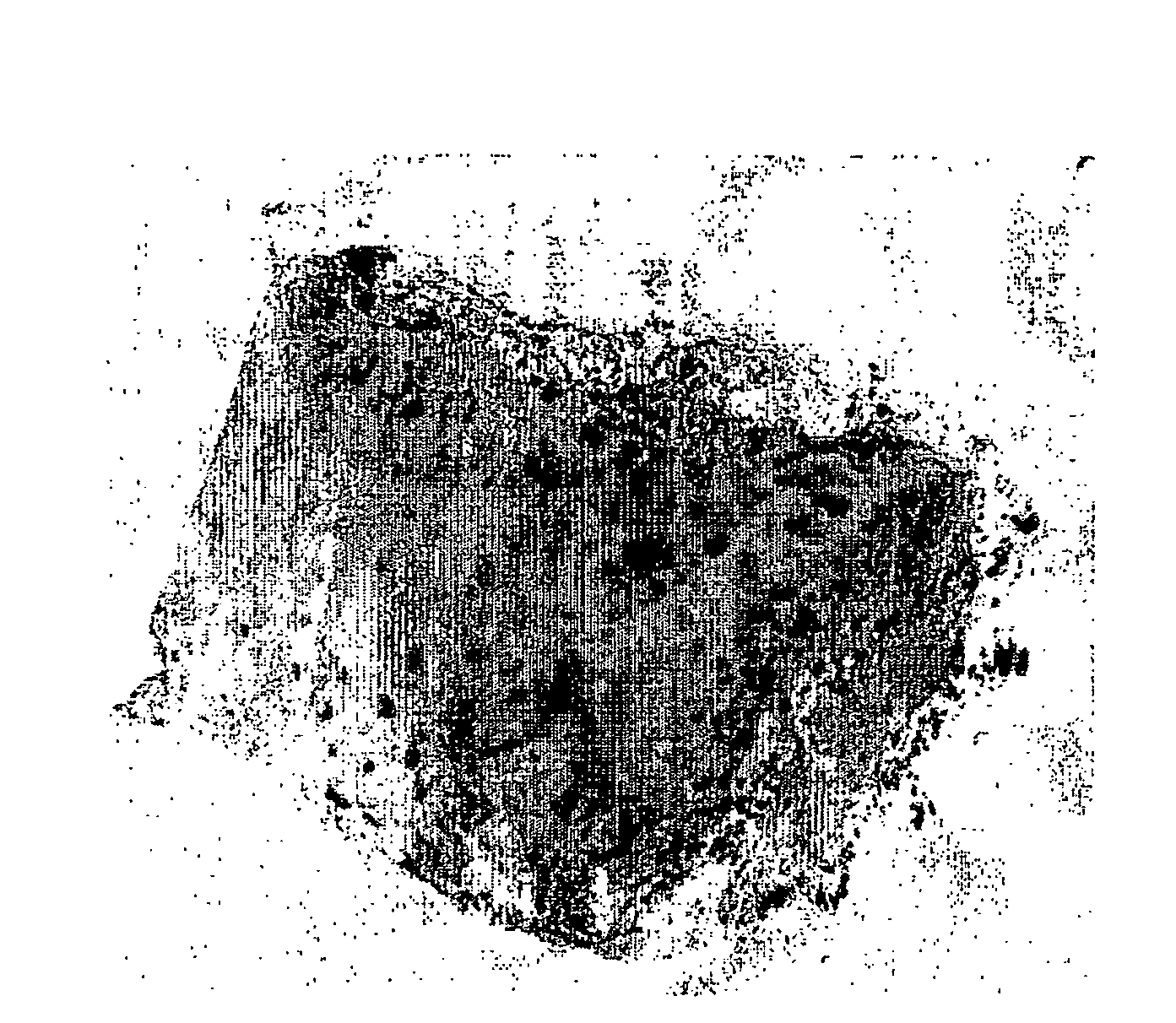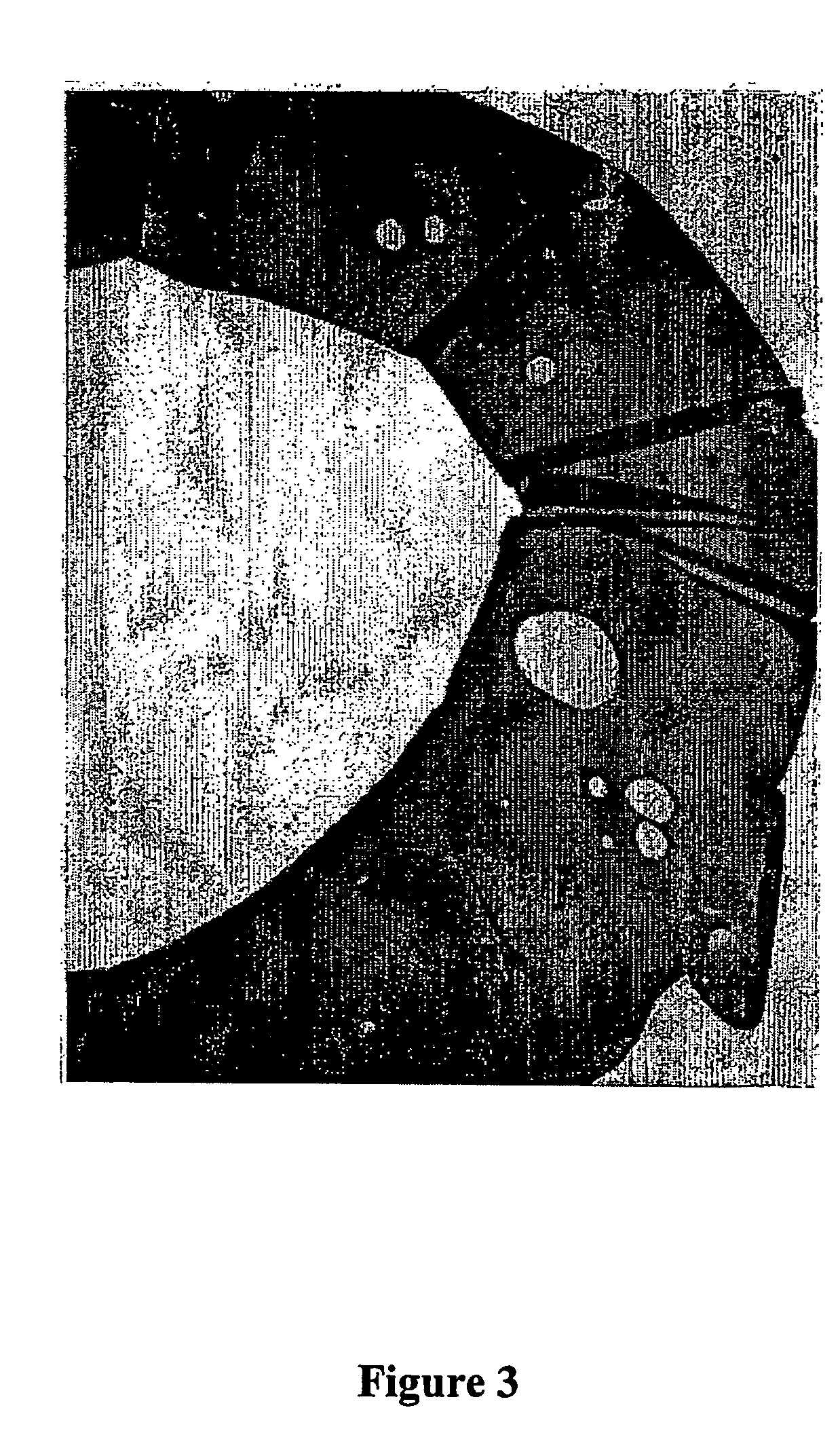Cohesive coprecipitates of sulfated polysaccharide and fibrillar protein and use thereof
- Summary
- Abstract
- Description
- Claims
- Application Information
AI Technical Summary
Benefits of technology
Problems solved by technology
Method used
Image
Examples
example 1
Manufacture of the GD Biopolymer
A. Gelatin-High Molecular Weight Dextran Sulfate Biopolymer, Acidic pH—NVR-3
[0098] A solution of Gelatin (20 mg / ml in Hanks Balanced Salt Solution (HBSS) from Gibco, Catalog #14025-50) and a solution of dextran sulfate (M.W. 500,000 Dalton, 10 mg / ml in HBSS) were mixed at 70° C. in the proportion of 70% of gelatin to 30% of dextran sulfate by weight (w / w), so that the final concentrations are 20 mg / ml of gelatin and 10 mg / ml of dextran sulfate. The ratio of 70 / 30 (w / w) of gelatin to dextran sulfate was found optimal for this combination of gelatin-dextran sulfate. After 3 min., the pH of the solution was adjusted to 3.0 using 5N acetic acid (0.1 ml of acetic acid solution per 1 ml of mixture), and the solution was mixed carefully by shaking. After additional 3 min. a coprecipitate gel was formed and it was further precipitated from the solution with absolute ethanol. The unpolymerized molecules remain soluble, while the cohesive biopolymer is remov...
example 2
Forming the GD-Tube
[0106] Cohesive biopolymer gels obtained as described in Example 1 above were transferred to a glass Petri dish and heated at 100° C. for 1-2 hrs in a dry oven until ethanol was completely evaporated. Then the polymeric substance was cooled to room temperature and transferred to a hot (100° C.) mold for preparation of sleeves or membranes by a compression molding procedure. After cooling the formed item was removed from the mold and dried to a constant weight.
[0107] When NVR-7 was produced, it was found to be water insoluble and thus has a longer retention time to biodegradation compared to NVR-3 and NVR-5. Incubation of NVR-7 matrix in sterile PBS at 37° C. for 4 month did not cause any changes in the construct appearance, integrity and / or weight.
example 3
Testing the GD Tube to Serve as a Stent-Sleeve, or Coating
[0108] A GD-Tube in the length of 5 mm with a diameter of 2 mm was stretched over a balloon carrying a coronary stent. The balloon was inflated to 16 atmospheres with water. The sleeve remained intact under two inflation cycles of 16 atmospheres. This ability of the cohesive biopolymer for stretching displays its potential for serving as stent-sleeve to lower restenosis and thrombosis rates after angioplasty.
PUM
| Property | Measurement | Unit |
|---|---|---|
| Fraction | aaaaa | aaaaa |
| Fraction | aaaaa | aaaaa |
| Mass | aaaaa | aaaaa |
Abstract
Description
Claims
Application Information
 Login to View More
Login to View More - R&D
- Intellectual Property
- Life Sciences
- Materials
- Tech Scout
- Unparalleled Data Quality
- Higher Quality Content
- 60% Fewer Hallucinations
Browse by: Latest US Patents, China's latest patents, Technical Efficacy Thesaurus, Application Domain, Technology Topic, Popular Technical Reports.
© 2025 PatSnap. All rights reserved.Legal|Privacy policy|Modern Slavery Act Transparency Statement|Sitemap|About US| Contact US: help@patsnap.com



